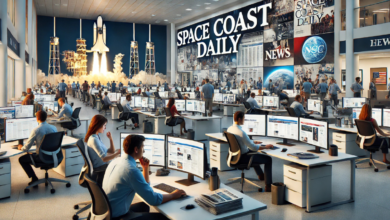Janitor AI: Revolutionizing Workplaces with Smarter Solutions

Introduction to Janitor AI
In an era where technology is rapidly transforming every facet of our lives, Janitor AI is a beacon of innovation in the cleaning and facility management industry. This revolutionary technology integrates artificial intelligence with robotic systems to enhance efficiency, cleanliness, and workplace hygiene. While cleaning has always been a critical aspect of facility management, traditional methods often fail to meet modern demands for precision, speed, and cost-effectiveness.
Janitor AI leverages cutting-edge tools like advanced sensors, machine learning algorithms, and IoT (Internet of Things) devices to automate and optimize cleaning processes. From hospitals requiring sterile environments to bustling airports managing high foot traffic, Janitor AI ensures impeccable standards of cleanliness while reducing operational burdens. The importance of automation in facility management cannot be overstated, particularly as businesses aim to improve productivity and adhere to stringent hygiene regulations in the post-pandemic world.
Key Features of Janitor AI
Janitor AI systems are defined by several standout features that set them apart from traditional cleaning methods. These include:
- Advanced Sensors and Robotics: With high-precision sensors, Janitor AI systems can detect dirt, spills, and debris in real time.
- AI-Driven Decision Making: These systems use machine learning algorithms to plan optimal cleaning routes and adapt to changing conditions.
- Smart Integration: Janitor AI can seamlessly integrate with existing smart building systems, enabling coordinated facility management.
How Janitor AI Works
At its core, Janitor AI combines robotics, artificial intelligence, and IoT technology to deliver exceptional cleaning outcomes. The system operates through several interconnected components:
- Sensors and IoT Devices: These are the eyes and ears of Janitor AI. Sensors detect the presence of dirt, monitor air quality, and even assess high-traffic areas that require frequent cleaning.
- Machine Learning Algorithms: AI processes data to identify cleaning priorities once data is collected. The system can learn from past activities, improving its efficiency and accuracy over time.
- Robotic Mechanisms: Robotic units equipped with brushes, vacuum systems, and disinfectant sprayers perform the cleaning tasks. These robots are designed to navigate complex environments and avoid obstacles effortlessly.
A Typical Workflow
A Janitor AI system begins its workflow by scanning the environment using its sensors. It identifies areas requiring attention and prioritizes tasks based on urgency. For instance, a spill in a hospital corridor would take precedence over routine floor cleaning in an office lobby. The system then dispatches robotic units to the designated area, ensuring cleaning is performed swiftly and effectively.
Real-World Applications
Janitor AI is already making waves in various industries:
- Hospitals: Ensuring sterile environments while minimizing human exposure to biohazards.
- Commercial Offices: Maintaining a clean and productive workspace for employees.
- Airports: Managing cleanliness in high-traffic zones to enhance passenger experience.
Benefits of Janitor AI
The adoption of Janitor AI offers a plethora of benefits, making it an invaluable asset for modern workplaces:
Enhanced Efficiency and Time Savings
Traditional cleaning methods often involve manual labour, which can be time-consuming and prone to errors. Janitor AI streamlines the process by automating repetitive tasks, allowing human staff to focus on more complex responsibilities. The system’s ability to work around the clock ensures that facilities remain spotless without downtime.
Improved Hygiene Standards
Janitor AI systems have tools to sanitize surfaces thoroughly, eliminating harmful pathogens. This is particularly crucial in hospitals and food processing units, where cleanliness directly impacts health and safety.
Cost Reduction
While the initial investment in Janitor AI systems can be significant, the long-term savings are substantial. Through consistent maintenance, businesses can reduce labor costs, minimize cleaning supply wastage, and extend the lifespan of their facilities.
Data-Driven Insights
One of the standout features of Janitor AI is its ability to provide actionable insights. Facility managers can analyze cleaning data to identify high-traffic areas, optimize cleaning schedules, and allocate resources more effectively.
Challenges and Limitations

Despite its numerous advantages, Janitor AI is not without challenges:
High Initial Costs
The upfront investment for implementing Janitor AI systems can be a barrier for small and medium-sized businesses. However, as the technology becomes more widespread, costs are expected to decrease.
Integration Issues
Integrating Janitor AI with existing building management systems can be complex, especially in older facilities. Businesses may need to invest in upgrades to ensure seamless operation.
Privacy Concerns
As Janitor AI systems collect data to optimize cleaning processes, privacy and data security concerns arise. Companies must adhere to strict regulations to protect sensitive information.
Limited Adaptability
While highly effective in structured environments, Janitor AI may struggle with unconventional cleaning scenarios requiring human judgment.
Future of Janitor AI
The future of Janitor AI is promising, with exciting developments on the horizon:
Emerging Trends
- Eco-Friendly Solutions: AI-driven cleaning systems increasingly focus on sustainable practices, such as reducing water and chemical usage.
- Collaboration with Service Robots: Future systems may collaborate with other robots to perform tasks like restocking supplies or delivering items.
- Enhanced Human-Robot Interaction: Advances in AI will enable robots to understand better and respond to human instructions.
Predictions
As technology evolves, Janitor AI will likely become a standard facility management feature. Governments and organizations are also expected to establish regulations to ensure AI’s safe and ethical use in this domain.
Conclusion
Janitor AI is a transformative technology that redefines cleanliness and efficiency standards in modern workplaces. Combining robotics, artificial intelligence, and data-driven insights addresses the challenges of traditional cleaning methods while paving the way for a smarter future. Although challenges such as high costs and integration issues remain, the benefits far outweigh these hurdles, making Janitor AI a worthwhile investment for forward-thinking organizations.
FAQs
What is Janitor AI, and how does it differ from traditional cleaning methods?
Janitor AI uses robotics and artificial intelligence to automate cleaning tasks, offering greater efficiency and precision than manual methods.
Can Janitor AI replace human janitors completely?
While Janitor AI can handle repetitive and hazardous tasks, human supervision and adaptability remain essential for complex scenarios.
What industries benefit the most from Janitor AI?
Industries like healthcare, hospitality, transportation, and commercial real estate benefit significantly from Janitor AI.
How much does it cost to implement a Janitor AI system?
Costs vary depending on the complexity and scale of the system, but the long-term savings in labour and maintenance often justify the investment.
Is Janitor AI technology eco-friendly?
Many Janitor AI systems are designed to minimize water and chemical usage, promoting sustainable cleaning practices.
What advancements can we expect in Janitor AI over the next decade?
Future advancements include better human-robot collaboration, eco-friendly solutions, and broader facility management systems integration.




